Types of Pressure-Sensitive Adhesives
Demystifying Tape: Three Adhesive Families
Pressure-sensitive adhesives (PSA). Self-adhesives. Self-stick adhesives. The technology we know as tape goes by many names. Then there are all the different products. Thinking about all the tape products to choose from, overwhelming becomes quite the understatement. There are over a hundred thousand options, with hundreds of new patents submitted each year.
Quite the variety for a sticky thing that sticks to things!
Luckily, tape’s a lot less daunting in terms of adhesive families. The number goes from over a hundred thousand down to three:
- Rubber-based adhesives
- Acrylic-based adhesives
- Silicone-based adhesives
Rubber-Based Adhesives
While we’ve found ceramics thousands of years old held together by mixtures of tree sap and 4,000-year-old recipes for fish glue, the first known use of adhesive tape appeared in 1845. Dr. Horace Day, a surgeon, applied a natural rubber adhesive to fabric scraps, inventing surgical tape.
Since then, rubber-based tapes have come a long way. They tend to be the most affordable compared to acrylic- and silicone-based tapes, and they come in two main varieties:
- Natural rubber
- Synthetic rubber
Natural rubber adhesives come from rubber trees, whereas synthetic rubber adhesives come from laboratories. Since they’re not sticky by nature, tackifier resins must be added to give them tack.
Coincidentally enough, this combo of rubber and resin gives rubber-based tapes the highest initial tack of the three families. In fact, rubber-based PSAs are the go-to option if you need a strong bond immediately. Out of the three adhesive families, rubber-based options have the fastest dwell time, meaning how long it takes to full bond strength.
Recommended Use: While they bond well to a spectrum of low surface energy (LSE) to high surface energy (HSE) materials, they’re best suited for low-stress indoor applications in stable environments.
This recommendation comes because rubber adhesives don’t hold up as well to high temperatures, chemicals, humidity, UV, light, and oxidation. These aging and environmental limitations make for less of a long-term solution, especially one outdoors or around harsh conditions.
That said, again, the technology in rubber-based adhesive solutions are getting better. There are options that show some modest resistance to environmental and aging factors.
Strengths
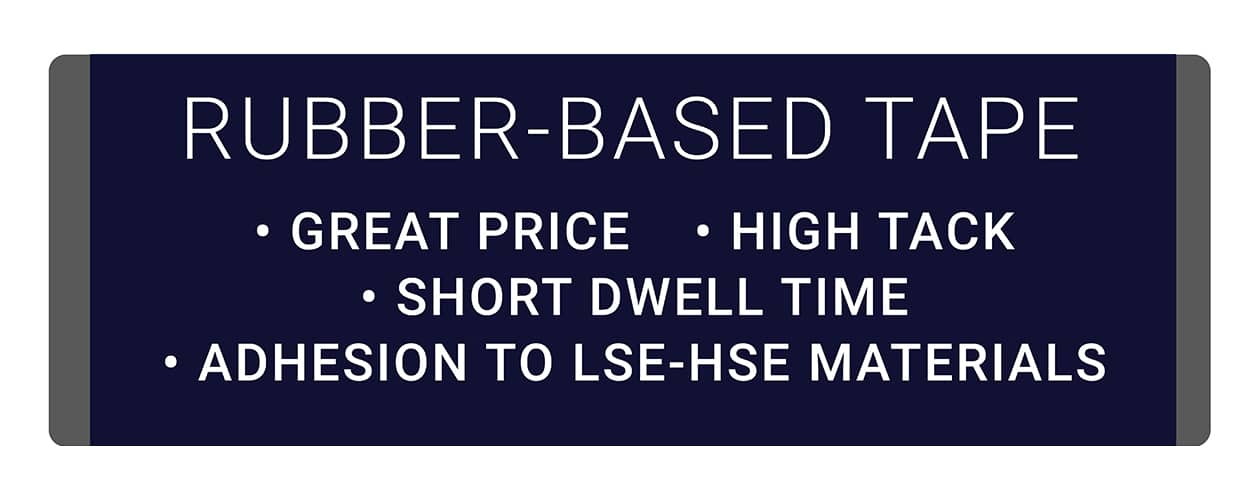
LIMITATIONS
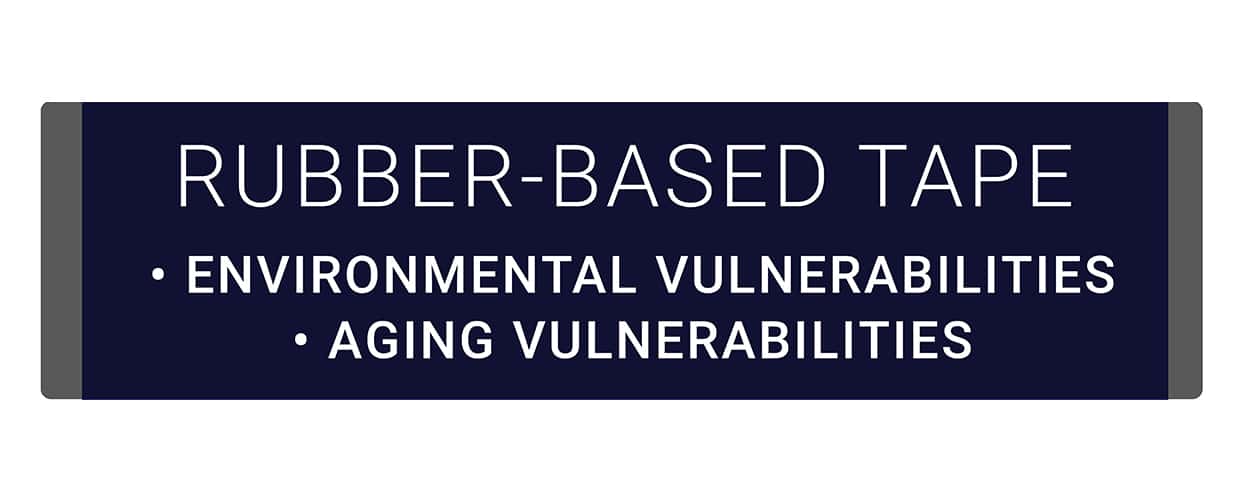
Acrylic-Based Adhesives
Acrylic-based PSAs were developed to address the aging and environmental limitations of rubber-based tapes. As a result, their permanent bonds are incredibly durable to higher temperatures, humidity, chemicals, UV, ozone, light, and oxidation.
Since acrylic options are completely synthetic, made in labs with an array of petrochemical cocktails, they are the most customizable of the three families. They can be adjusted and tuned to meet the needs of most any application.
Need a flame-retardant tape that holds to hard-to-bond LSE surfaces? An acrylic can be cooked up for that. Need an invisible tape with a specific temperature use range that meets low VOC standards? There are acrylics for all that and more. Due to their tunability, acrylic-based adhesives make up the vast majority of tapes on the market. Like rubber-based options, they come in two main varieties:
- Pure acrylic
- Modified acrylic
Modified acrylics are also known as tackified acrylics since the modification involved commonly includes adding tackifiers to improve initial bond performance. These modified options improve dwell time performance, achieving a stronger bond faster. The ultimate full bond strength for acrylics, however, takes about three days to achieve.
Recommended Use: This enormous portfolio covers the gamut for indoor/outdoor, short-/long-term, and critical applications.
Strengths
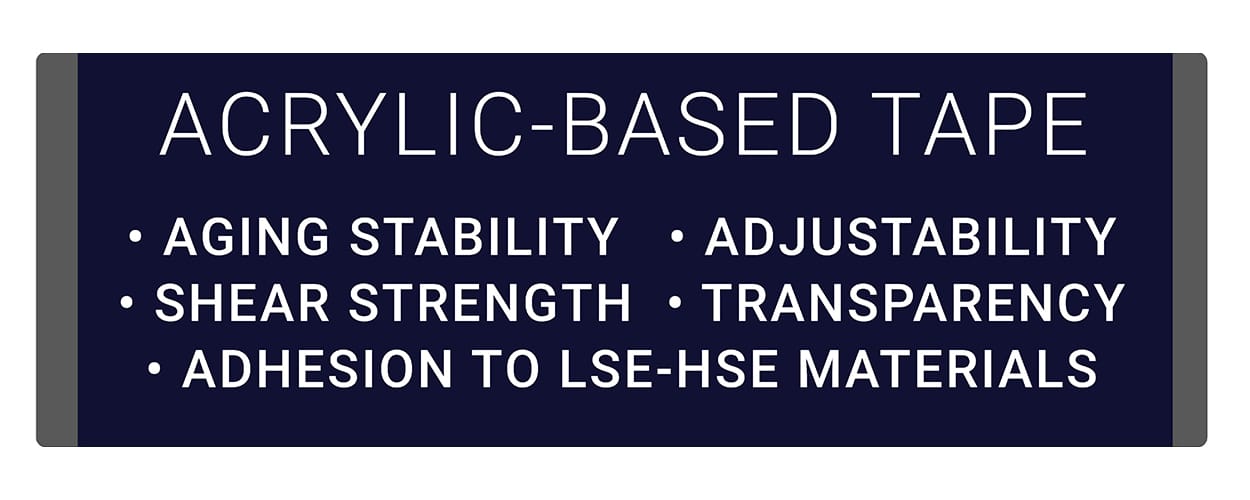
LIMITATIONS
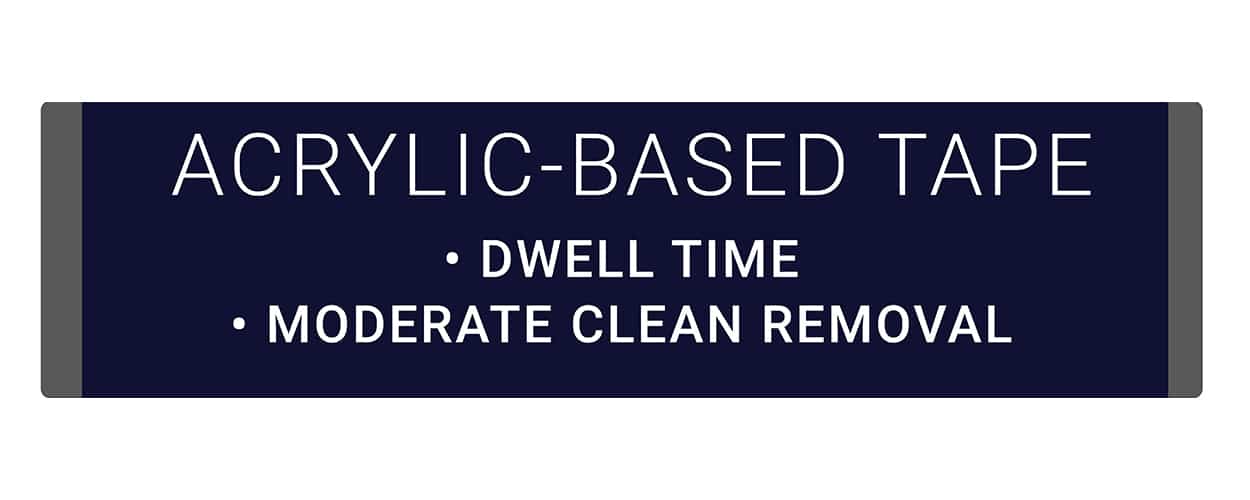
Silicone-Based Adhesives
Silicone-based adhesives are known for three main traits:
- Ability to bond to silicone and PTFE (the nonstick coating popularized by Teflon®)
- Fantastic environmental resistance (including the widest temperature ranges)
- Hypoallergenic properties (relatively resistant to molds and fungi)
Just like with acrylics, silicone adhesives are synthetically created in a lab. However, their process is much more complicated. These adhesives come from sand, and the journey from beach to adhesive tape is an expensive one.
But when it comes to aging and environmental resistance, silicone-based tapes are the crème de la crème. From LED applications to the inside of jet engines, they prove their status as a premium product time and time again.
Recommended Use: Considering their premium price point, these tapes are best reserved for projects involving silicone, critical applications with harsh environmental conditions, and medical applications requiring gentle removal from skin.
Strengths
Limitations
Combining the Best Traits of All Three Types of Tape Adhesives
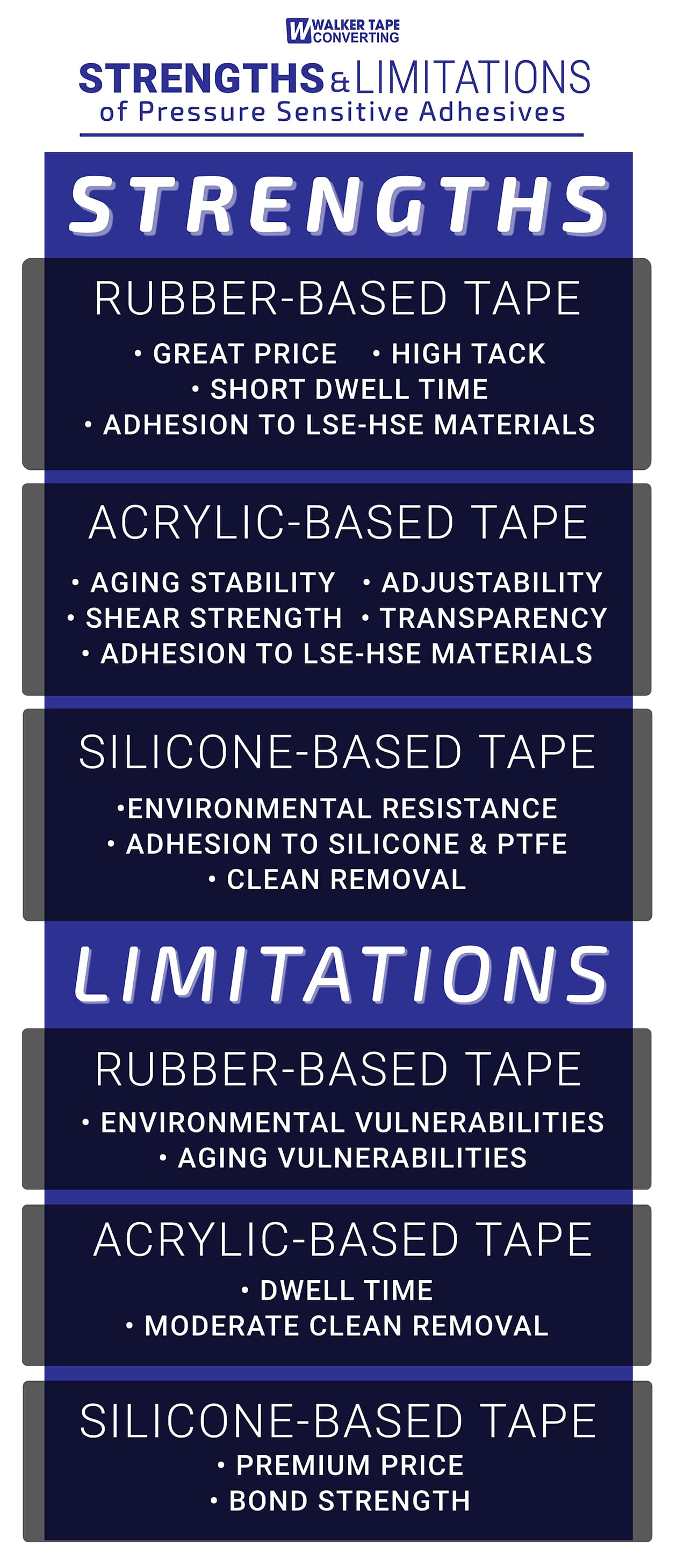
It’s best to veer away from thinking one kind of tape adhesive is better than another. For example, a bias toward rubber-based tapes, could cost you more down the road if you should’ve gone with an acrylic-based tape. Inversely, if your application doesn’t need high performance, then high performance options are overkill.
Hypothetically, let’s say you need to bond dissimilar materials, such as silicone sponge foam to rubber. Rather than choosing one adhesive family, the ideal solution here includes matching kind with kind. Silicone bonds best to silicone, rubber to rubber, and acrylic to acrylic. So, we can create a double-sided differential tape with a rubber adhesive on one side and a silicone adhesive on the other.
Or let’s say you need a tape that’s easy to remove on one side but meant to be permanent on the other. Using the above infographics as a starting off point, our best solution could be a differential tape using natural rubber and acrylic adhesives.
Instead of a “vs” mentality, think of how you can combine the strengths of these three adhesive families to create the exact tape you need.
Have a project that calls for custom tape solutions? Our experts are ready to assist you with any questions and respond quickly to your free custom quote requests.
